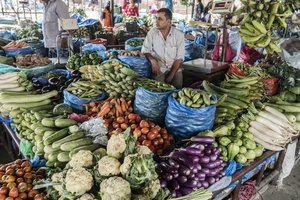Opinion

Global Economy After COVID-19 Pandemic
Neoliberalism came as the economic policy after the great depression of 1930 which is often associated with laissez-faire economy as conceptualized by Adam Smith back in the 18th century that advocates ‘free’ market and anti-regulatory policies.
By Dr. Man Bahadur Bk Apr 01, 2020

Commentary On The Preamble Of Padma Shamsher's Government Of Nepal Act, 1948
The Preamble highlights that the Constitutional Act is being ordained and promulgated by the Maharaja Padma Shamsher and not His Majesty King Tribhuvan, who remained on the titular status as an effect of the Panjapatra of 1956. It is pertinent to study the preamble of the Government of Nepal Act by reflecting on its main phrases, expressions, and themes.
By Dr. Bipin Adhikari Mar 17, 2020


Global Implication Of Coronavirus
Apprehended serious disruption in Chinese supply chain could push up currently depressed global inflation level. Let us hope the current level of inflation in Nepal (6.4 percent) does not gallop and pray that Lord Pashupatinath protects us from the current virus as we were saved in 2003 from Severe Acute Respiratory Syndrome (SARS), originating in China, which spread to scores of countries in Asia but Nepal.
By Dr. Tilak Rawal Feb 23, 2020

Latest Updates
- Gelephu Roadshow 2025: Connecting India and Bhutan for Sustainable Development
- 10 hours, 2 minutes ago
- Embassy of Nepal in India and PHDCCI India-Nepal Centre Organised “India-Nepal Economic Cooperation Meet 2025
- 4 days, 10 hours ago
- Bhanu Jayanti being celebrated today
- 5 days, 21 hours ago
- Police Interrogate Two Monarchist Officials, Release Them After Written Commitments
- 6 days, 20 hours ago
- Spain’s Academia de la Diplomacia and Nepal’s The Diplomat Nepal Join Hands
- 1 week, 1 day ago
- Just being born in Nepal does not make one a Nepali: former King Gyanendra Shah
- 1 week, 4 days ago
- Siddhababa Tunnel Makes A Major Milestone
- 1 week, 5 days ago
- PM Oli Returns Home Attending UN FFD4 Summit
- 1 week, 6 days ago
- Journalist Pathak ordered to be released on bail of Rs 25,000
- 2 weeks ago
- Tik Talker Rama Basnet released on bail of Rs 30,000
- 3 weeks, 1 day ago












